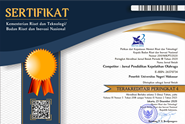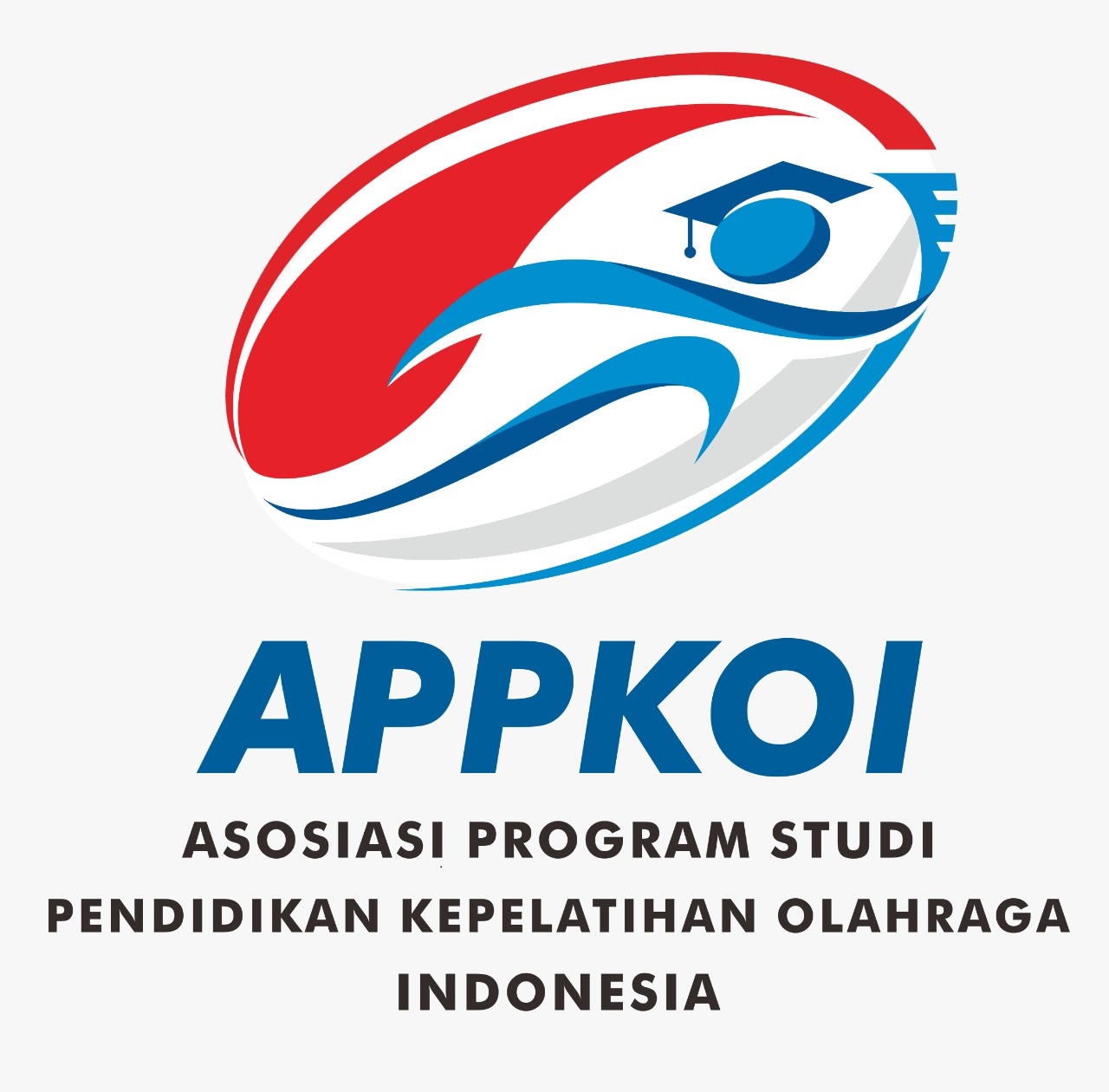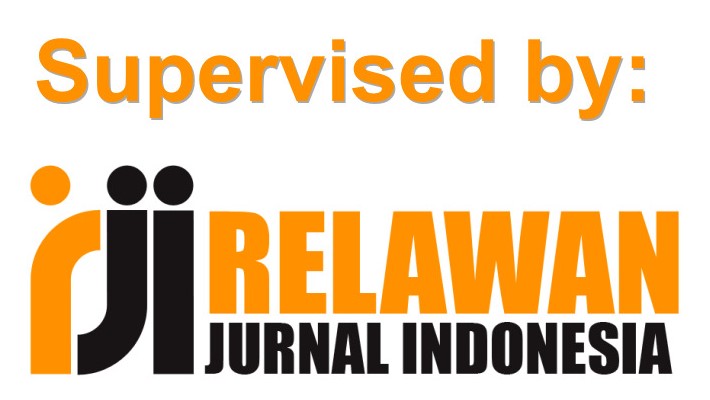IMPLEMENTATION OF BEHAVIORISM THEORY-BASED TRAINING LEARNING MODEL IN PHYSICAL EDUCATION IN CLASS VII JUNIOR HIGH SCHOOL FOOTBALL GAME MATERIALS
(1) Universitas Islam Negeri Mataram
(*) Corresponding Author
DOI: https://doi.org/10.26858/cjpko.v13i1.18131
Abstract
This article aims to provide information about learning based on behaviorism learning theory through a drill learning model in football game material in grade VII Junior High School. Behaviorism learning theory, which has the principle of providing a stimulus that results in a response. The stimulus is given by the teacher in the form of material that needs to be done by students, resulting in students responding by doing assignments from the material. Physical education, sports, and health (PESH) learning activities involve moving activities to achieve competence. The game of football is one of the materials used in learning PESH movements. The principle of learning PESH is to involve students to move happily. The drill learning model is an alternative that can be used in soccer learning for seventh-grade students of junior high school. The exercise learning model is repeating movements in sports techniques that have been compiled by the teacher. In conclusion, with a variety of exercise learning models, students can learn PESH material to achieve better and more active sports movements and feel happy. Teachers need to innovate continuously to design learning models that are following the characteristics of students.
Keywords
Full Text:
PDFReferences
Ahmadi, I. K., Amri, S., & Elisah, T. (2011). Strategi Pembelajaran Sekolah Terpadu. Jakarta: Prestasi Pustaka.
Aktop, A., & Karahan, N. (2012). Physical Education Teacher’s Views of Effective Teaching Methods in Physical Education. Procedia - Social and Behavioral Sciences, 46(2003), 1910–1913.
Budiningsih, C. A. (2005). Belajar dan Pembelajaran. Jakarta: Rineka Cipta.
Chatoupis, C. C., & Vagenas, G. (2017). Effects of Two Practice Style Formats on Fifth Grade Students’ Motor Skill Performance and Task Engagement. The Physical Educator, 74(2), 220–238.
Chatoupis, C., & Vagenas, G. (2018). Effectiveness of the Practice Style and Reciprocal Style of Teaching: A Meta-Analysis. The Physical Educator, 75(2), 175–194.
Chatzipanteli, A., Digelidis, N., & Papaioannou, A. G. (2015). Self-Regulation, Motivation and Teaching Styles in Physical Education Classes: An Intervention Study. Journal of Teaching in Physical Education, 34(2), 333–344.
Creasy, J., Whipp, P., & Jackson, B. (2012). Teachers’ Pedagogical Content Knowledge and Students’ Learning Outcomes in Ball Game Instruction. ICHPER-SD Journal of Research, 7(1), 3–11.
Desmita. (2009). Psikologi Perkembangan Peserta Didik. Bandung: Remaja Rosdakarya.
Dimyati, J. (2016). Pembelajaran Terpadu Untuk Taman Kanak-Kanak/ Raudatul Atfal Dan Sekolah Dasar. Jakarta: Kencana.
DiVesta, F. J., & Thompson, G. G. (1979). Educational Psychology: Introduction and Behaviour Change. New York: Meredith.
Djamarah, S. B., & Zain, A. (2010). Strategi Belajar Mengajar. Jakarta: Rineka Cipta.
Duke, D. L. (2005). Education Empire: The Evolution of an Excellent Suburban School System (SUNY Series, Educational Leadership). New York: State University of New York Press.
Eggen, P. D., Kauchack, D. P., & Harder, R. J. (1979). Strategies for Teachers: Information Processing Models in The Classroom. Englewood Cliffs: Prentice-Hall.
Ertmer, P. A., & Newby, T. J. (2013). Behaviorism, Cognitivism, Constructivism: Comparing Critical Features From an Instructional Design Perspective. Performance Improvement Quarterly, 26(2), 43–71.
Gagné, R. M., Wager, W. W., Golas, K. C., & Keller, J. M. (2005). Principles of Instructional Design (5th ed.). United States: Wadsworth, Cengage Learning.
Gerlach, V. S., & Ely, D. P. (2003). Teaching and Media: A Systematic Approach. (S. Grabowski, Ed.) (2nd ed.). Englewood Cliffs: Prentice-Hall.
Goldberger, M., Ashworth, S., & Byra, M. (2012). Spectrum of Teaching Styles Retrospective 2012. Quest, 64(4), 268–282.
Haris, A., & Jihad, A. (2010). Evaluasi Pembelajaran. Yogyakarta: Multi Pressindo.
Hitipeuw, I. (2009). Belajar & Pembelajaran. Malang: FIP UM.
Joyce, B., Weil, M., & Calhoun, E. (2015). Models of Teaching (9th ed.). Boston: Pearson.
Kirk, D. (2013). Educational Value and Models-Based Practice in Physical Education. Educational Philosophy and Theory, 45(9), 973–986.
Magdalena, I., Hidayah, A., & Astuti, A. W. (2020). Peran Kinerja Guru dalam Meningkatkan Prestasi Belajar Siswa Sekolah Dasar. Nusantara : Jurnal Pendidikan dan Ilmu Sosial, 2(3), 383–392.
Magill, R., & Anderson, D. I. (2016). Motor Learning and Control: Concepts and Applications (11th ed.). Dubuque: McGraw-Hill Education.
Majid, A. (2014). Strategi Pembelajaran. Bandung: Remaja Rosdakarya.
Mosston, M., & Ashworth, S. (2008). Teaching Physical Education: First on-line edition.
Mulyasa, E. (2015). Menjadi Guru Profesional: Menciptakan Pembelajaran Kreatif dan Menyenangkan. Bandung: Remaja Rosdakarya.
Munir. (2012). Multimedia Konsep & Aplikasi dalam Pendidikan. Bandung: Alfabeta.
Mustafa, P. S., & Dwiyogo, W. D. (2020). Kurikulum Pendidikan Jasmani, Olahraga, dan Kesehatan di Indonesia Abad 21. Jurnal Riset Teknologi dan Inovasi Pendidikan (JARTIKA), 3(2), 422–438.
Mustafa, P. S., & Sugiharto. (2020). Keterampilan Motorik pada Pendidikan Jasmani Meningkatkan Pembelajaran Gerak Seumur Hidup. Jurnal Sporta Saintika, 5(2), 199–218.
Mustafa, P. S., & Winarno, M. E. (2020). Penerapan Pendekatan Saintifik dalam Aktivitas Belajar Pendidikan Jasmani, Olahraga, dan Kesehatan di SMK Negeri 4 Malang. Jurnal Penjakora, 7(2), 78–92.
Mustafa, P. S., Winarno, M. E., & Asim. (2016). Pengembangan Variasi Latihan Service Atas untuk Peserta Ekstrakurikuler Bolavoli di SMK Negeri 4 Malang. Jurnal Pendidikan Jasmani, 26(1), 159–175.
Mustafa, P. S., Winarno, M. E., & Supriyadi. (2019). Penilaian Pendidikan Jasmani, Olahraga, dan Kesehatan pada Sekolah Menengah Pertama Negeri Kota Malang. Jurnal Pendidikan: Teori, Penelitian, dan Pengembangan, 4(10), 1364–1379.
Nurdin, S., & Adriantoni. (2016). Kurikulum dan Pembelajaran. Jakarta: Raja Grafindo Persada.
Peraturan Pemerintah Republik Indonesia Nomor 19 Tahun 2005 tentang Standar Nasional Pendidikan. (2005).
Permendikbud. (2016). Peraturan Menteri Pendidikan dan Kebudayaan Republik Indonesia Nomor 24 Tahun 2016 tentang Kompetensi Inti dan Kompetensi Dasar Pelajaran pada Kurikulum 2013 pada Pendidikan Dasar dan Pendidikan Menengah.
Pham, H. (2011). Theory-Based Instructional Models Applied in Classroom Contexts. Literacy Information and Computer Education Journal (LICEJ), 2(2), 406–415.
Pribadi, B. A. (2011). Model Assure untuk Mendesain Pembelajaran Sukses. Jakarta: Dian Rakyat.
Proios, M. (2018). Implications of The Practice Style Teaching on Motor and Knowledge Performance of A Basic Gymnastics Skill. European Journal of Physical Education and Sport Science, 5(1), 1–18.
Proios, M. (2019). Effects of practice style on a complex gymnastics skill performance of high-, medium-, and low-skilled learners. Science of Gymnastics Journal, 11(1), 77–90.
Restian, A. (2015). Psikologi Pendidikan Teori & Aplikasi. Malang: UMM. Press.
Richey, R. C., Klein, J. D., & Tracey, M. W. (2011). The Instructional Design Knowledge Base: Theory, Research, and Practice. New York: Routledge Taylor & Francis.
Roesdiyanto. (2017). Kompetensi Profesional Guru Pendidikan Jasmani, Olahraga dan Kesehatan (Dalam Kompetensi Inti Pemahaman Tujuan Pembelajaran dan Memilih Materi Pembelajaran Sesuai dengan Tingkat Perkembangan Peserta Didik). Artikel dipublikasikan dalam Prosiding. Seminar Nasional Profesionalisme Tenaga Profesi Pendidikan Jasmani, Olahraga, dan Kesehatan (pp. 624–630). Malang: Jurusan Pendidikan Olahraga Pascasarjana UM.
Roestiyah, N. K. (2008). Strategi Belajar Mengajar. Jakarta: Rineka Cipta.
Rohani, A. (2004). Pengelolaan Pengajaran. Jakarta: Erlangga.
Rusman. (2013). Model-Model Pembelajaran. Jakarta: RajaGrafindo Persada.
Sagala, S. (2009). Konsep dan Makna Pembelajaran Untuk Membantu Memecahkan Problematika Belajar dan Mengajar. Bandung: Alfabeta.
Sahabuddin, & Hakim, H. (2020). Penerapan Latihan Model Dhin Dhon pada Klub Bolavoli di Kabupaten Bantaeng. Celebes Abdimas: Jurnal Pengabdian Kepada Masyarakat, 2(1), 32–42.
Sahabuddin, S. (2020). Pengaruh Latihan Smash Bola Gantung dan Bola Lambung Terhadap Kemampuan Smash Dalam Permainan Sepaktakraw. SPORTIVE: Journal Of Physical Education, Sport and Recreation, 3(2), 105–111.
Sahabuddin, S., & Bismar, A. R. (2020). Pengaruh Latihan Akselerasi Terhadap Kemampuan Lari 50 Meter. Jurnal Speed (Sport, Physical Education, Empowerment), 3(1), 51–57.
Santrock, J. W. (2012). Psikologi Pendidikan: Educational Psychology Buku 1. Jakarta: Salemba Humanika.
Schunk, D. H. (2012). Learning Theories: An Educational Perspective (6th ed.). Boston: Pearson.
Shimon, J. M. (2011). Introduction to Teaching Physical Education: Principles and Strategies. United States: Human Kinetics.
Shoimin, A. (2014). 68 Model Pembelajaran Inovatif dalam Kurikulum 2013. Yogyakarta: Ar-Ruzz Media.
Siedentop, D., Hastie, P. A., & Mars, H. van der. (2011). Complete Guide to Sport Education (2nd ed.). United States: Human Kinetics.
Smaldino, S. E., Lowther, D. L., & Russell, J. D. (2014). Instructional Technology and Media for Learning (10th ed.). London: Pearson Education Limited.
Staddon, J. (2014). The New Behaviorism (2nd ed.). New York: Psychology Press.
Stones, E. (1979). Psychopedagogy: Psychological Theory and The Practice of Teaching. London: Methuen.
Sudjana, N. (2010). Dasar-Dasar Proses Belajar Mengajar. Bandung: Sinar Baru Algesindo.
Sukmadinata, N. S., & Syaodih, E. (2012). Kurikulum dan Pembelajaran Kompetensi. Bandung: Refika Aditama.
Supriadie, D., & Darmawan, D. (2012). Komunikasi Pembelajaran. Bandung: Remaja Rosdakarya.
Suyadi. (2013). Strategi Pembelajaran Pendidikan Karakter. Bandung: Remaja Rosdakarya.
Suyono, & Hariyanto. (2012). Belajar dan Pembelajaran. Bandung: Remaja Rosdakarya.
Syah, M. (2014). Psikologi Pendidikan dengan Pendekatan Baru. Bandung: Remaja Rosdakarya.
Syrmpas, I., & Digelidis, N. (2014). Physical education student teachers’ experiences with and perceptions of teaching styles. Journal of Physical Education and Sport, 14(1), 52–59.
Thobroni, M. (2015). Belajar & Pembelajaran: Teori dan Praktik. Yogyakarta: Ar-Ruzz Media.
Tim Pengembang MKDP Kurikulum dan Pembelajaran. (2012). Kurikulum & Pembelajaran. Jakarta: Rajawali Pers.
Weegar, M. A., & Pacis, D. (2012). A Comparison of Two Theories of Learning - Behaviorism and Constructivism as applied to Face-to-Face and Online Learning. E-Leader Conference. Manila.
Article Metrics
Abstract view : 2819 times | PDF view : 454 timesRefbacks
- There are currently no refbacks.
Copyright (c) 2021 Pinton Setya Mustafa

This work is licensed under a Creative Commons Attribution 4.0 International License.
COMPETITOR IS LICENSED BY :
 COMPETITOR is licensed under a Creative Commons Attribution 4.0 International License.
COMPETITOR is licensed under a Creative Commons Attribution 4.0 International License.
COMPETITOR EDITORIAL LOCATION :
![]() Kampus FIK Banta Bantaeng, Jalan Wijaya Kusuma Nomor 14, Rappocini, Makassar, Postal Code 90222
Kampus FIK Banta Bantaeng, Jalan Wijaya Kusuma Nomor 14, Rappocini, Makassar, Postal Code 90222
COMPETITOR IS INDEXED BY















